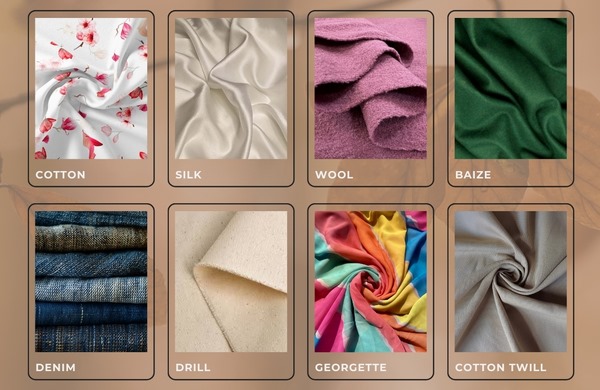Fabric Know-How: Understanding Different Textiles for Better Product Development

Choosing the right fabric is one of the most critical decisions in product development. The fabric you select affects not only the look and feel of your product but also its performance, durability, and care requirements. This comprehensive guide will help you understand different textile types and make informed decisions for your products.
Natural Fibers
Cotton
Cotton is the world's most popular natural fiber, known for its breathability, softness, and versatility. It's ideal for everyday wear, casual clothing, and home textiles.
- Properties: Breathable, absorbent, soft, durable
- Best for: T-shirts, dresses, shirts, bed linens
- Care: Machine washable, can shrink if not pre-treated
- Considerations: Wrinkles easily, may fade over time
Silk
Silk is a luxurious natural fiber known for its smooth texture, natural sheen, and excellent drape. It's perfect for high-end fashion and special occasions.
- Properties: Smooth, lustrous, lightweight, strong
- Best for: Evening wear, blouses, scarves, lingerie
- Care: Dry clean or hand wash, avoid direct sunlight
- Considerations: Expensive, requires careful handling
Wool
Wool is a natural fiber with excellent insulating properties, making it ideal for cold weather clothing and outerwear.
- Properties: Warm, moisture-wicking, naturally wrinkle-resistant
- Best for: Sweaters, coats, suits, blankets
- Care: Dry clean or hand wash, avoid hot water
- Considerations: Can be itchy, may shrink if not handled properly
Synthetic Fibers
Polyester
Polyester is a durable, easy-care synthetic fiber that's widely used in sportswear and everyday clothing.
- Properties: Durable, wrinkle-resistant, quick-drying
- Best for: Sportswear, outdoor clothing, casual wear
- Care: Machine washable, low maintenance
- Considerations: Less breathable than natural fibers
Nylon
Nylon is a strong, lightweight synthetic fiber commonly used in activewear and hosiery.
- Properties: Strong, lightweight, moisture-resistant
- Best for: Activewear, swimwear, hosiery, bags
- Care: Machine washable, avoid high heat
- Considerations: Can pill, sensitive to UV light
Fabric Construction
Understanding how fabrics are constructed helps you choose the right material for your specific needs.
Woven Fabrics
Woven fabrics are created by interlacing warp and weft yarns at right angles. They tend to be more structured and less stretchy.
- Examples: Denim, poplin, twill, satin
- Characteristics: Structured, less stretch, good for tailored garments
Knit Fabrics
Knit fabrics are created by interlocking loops of yarn. They're generally more stretchy and comfortable.
- Examples: Jersey, rib knit, interlock, fleece
- Characteristics: Stretchy, comfortable, good for casual wear
Fabric Selection Tips
- Consider the end use: Choose fabrics that match the intended function of your product
- Test before committing: Always request fabric samples and test them thoroughly
- Check care requirements: Ensure the fabric's care needs align with your target market
- Consider sustainability: Look for eco-friendly options like organic cotton or recycled polyester
- Factor in costs: Balance quality with budget constraints
By understanding these different fabric types and their properties, you can make informed decisions that will enhance your product quality and meet your customers' needs effectively.